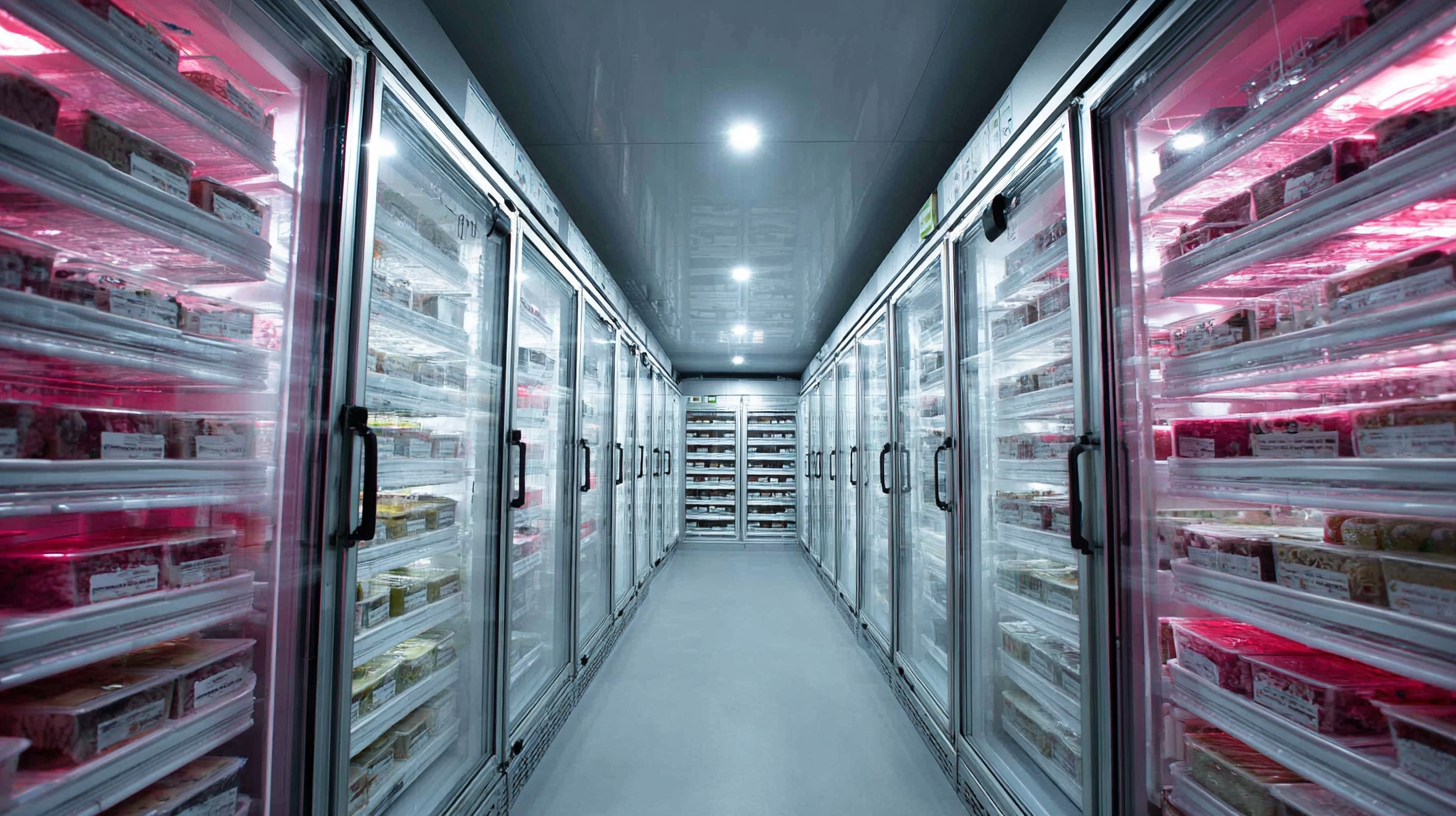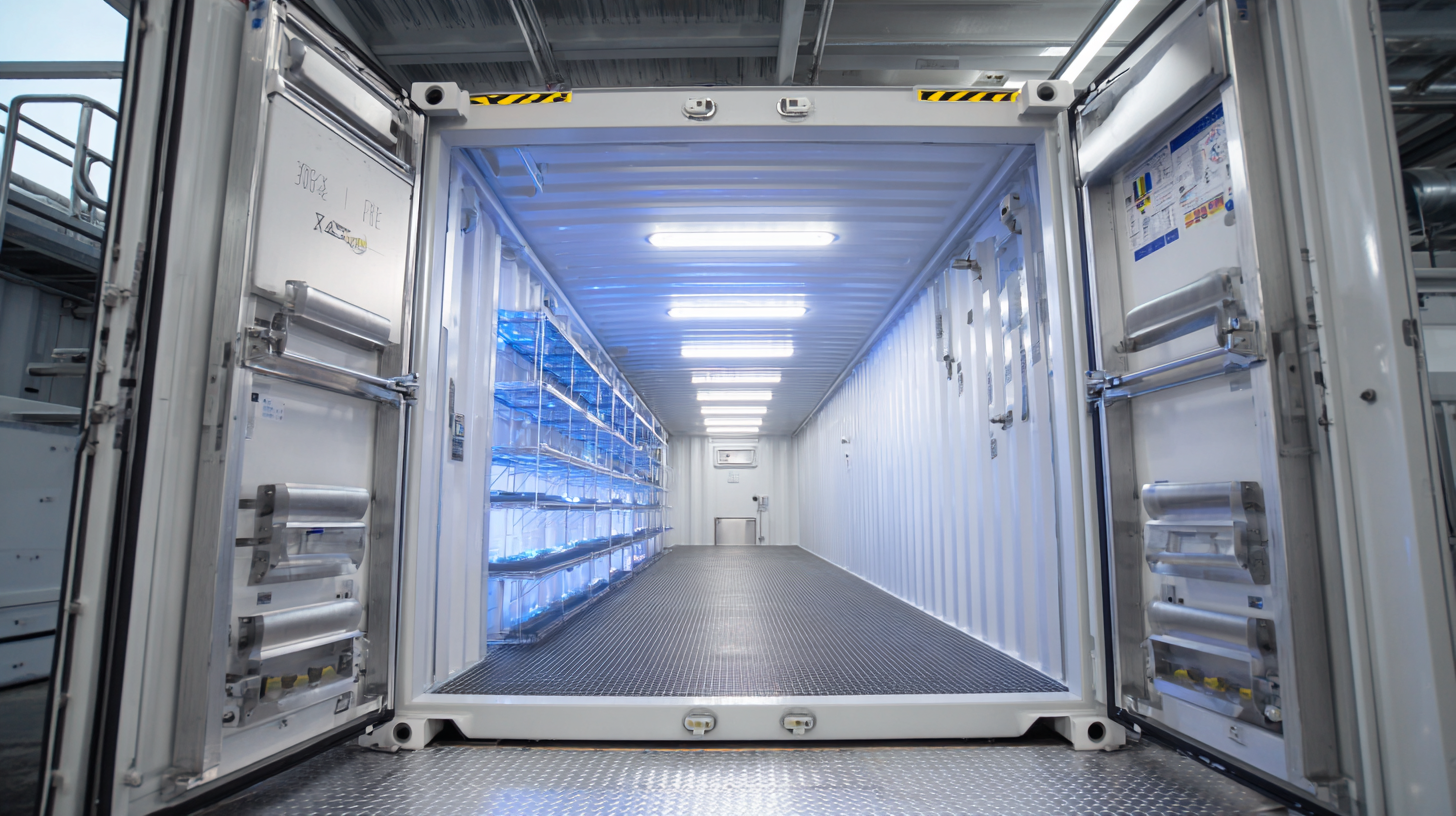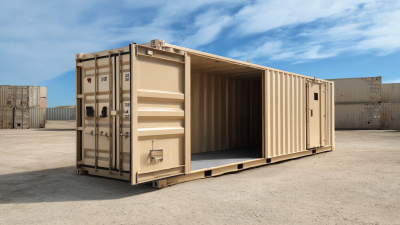Maximizing Freshness: Innovative Uses for Refrigerated Containers in the Food Industry
In the ever-evolving food industry, maintaining freshness and quality is paramount, particularly with the increasing global demand for perishable goods. Refrigerated containers have emerged as a pivotal solution, enabling the efficient storage and transportation of a wide variety of food products while significantly minimizing spoilage. According to a report by Research and Markets, the global refrigerated container market is projected to reach USD 12.28 billion by 2026, driven by the rising need for cold chain logistics, which ensures that food remains fresh from farm to table.

Innovative applications of refrigerated containers not only enhance the shelf life of products but also reduce waste and improve overall supply chain efficiency. In this guide, we explore various innovative uses for refrigerated containers in the food industry, illustrating how businesses can leverage these technologies to maximize freshness and meet consumer expectations.
Revolutionizing Cold Chain Logistics with Refrigerated Containers
 In recent years, the cold chain logistics industry has witnessed a significant transformation with the introduction of innovative refrigerated containers. These containers are designed not only to preserve the quality and safety of perishable goods but also to enhance the efficiency of the entire supply chain. By integrating advanced technology, such as temperature monitoring systems and real-time tracking capabilities, refrigerated containers ensure that food products maintain optimal freshness from the point of origin to the end consumer.
In recent years, the cold chain logistics industry has witnessed a significant transformation with the introduction of innovative refrigerated containers. These containers are designed not only to preserve the quality and safety of perishable goods but also to enhance the efficiency of the entire supply chain. By integrating advanced technology, such as temperature monitoring systems and real-time tracking capabilities, refrigerated containers ensure that food products maintain optimal freshness from the point of origin to the end consumer.
Moreover, the versatility of refrigerated containers allows businesses to adapt to varying logistical challenges. For instance, companies can utilize these containers for short-term storage during peak seasons or for long-distance transportation across regions and countries. This flexibility is crucial, especially in an era where consumer demand for fresh, organic, and locally sourced food is on the rise. Consequently, businesses are able to reduce food waste and improve profit margins, while also meeting stringent health and safety regulations. Overall, the evolution of refrigerated containers is redefining the standards of cold chain logistics, paving the way for a more sustainable food industry.
Advanced Technologies for Maintaining Optimal Food Freshness
In the food industry, maintaining optimal freshness is paramount, and advanced technologies are revolutionizing how refrigerated containers operate. These innovative systems employ precision temperature controls, real-time monitoring, and enhanced insulation materials, which work together to create the ideal environment for perishable goods. By minimizing temperature fluctuations, these technologies help reduce spoilage and extend the shelf life of products, making them invaluable for food distributors and retailers.
Moreover, the integration of IoT (Internet of Things) devices in refrigerated containers allows for comprehensive tracking and data analysis. These smart containers can transmit information regarding temperature, humidity, and even CO2 levels back to suppliers in real-time. This capability not only ensures that food remains fresh during transport but also provides a wealth of data that can be used to optimize logistics, reduce waste, and improve overall supply chain efficiency. By leveraging these advanced technologies, the food industry can better meet consumer demand for fresher, high-quality products while minimizing environmental impact.
Maximizing Freshness: Innovative Uses for Refrigerated Containers in the Food Industry
| Application | Temperature Range (°C) | Duration of Freshness (Days) | Technology Used |
|---|---|---|---|
| Fresh Produce | 0 to 4 | 7 to 14 | Active Refrigeration |
| Dairy Products | 1 to 4 | 14 to 30 | Temperature Control Systems |
| Frozen Goods | -18 to -25 | 6 to 12 | Cryogenic Freezing Technology |
| Meat Products | -1 to 3 | 5 to 10 | Ozone and UV Treatment |
| Seafood | -1 to 4 | 3 to 7 | Gaseous CO2 Packaging |
Creative Applications of Refrigerated Containers Beyond Traditional Use
Refrigerated containers have transcended their conventional role in preserving perishable goods, finding innovative applications across various sectors in the food industry. One exciting development is their use in pop-up restaurants and food festivals. These containers serve as mobile kitchens equipped with state-of-the-art refrigeration systems, allowing chefs to prepare and serve gourmet meals on-site while maintaining the freshness of ingredients. This approach not only enhances culinary experiences but also provides flexibility for food entrepreneurs, enabling them to reach diverse markets.
Additionally, refrigerated containers are being embraced for farm-to-table initiatives. Farmers can now transport fresh produce directly to urban centers in these specialized containers, ensuring minimal transit time and optimal temperature control. This not only preserves the quality of fruits and vegetables but also supports local economies by fostering direct relationships between producers and consumers. Furthermore, innovative applications include using these containers for temporary storage solutions during peak seasons, guaranteeing that supplies remain fresh and accessible. As the food industry evolves, the potential for refrigerated containers continues to expand, driving creativity and efficiency in food distribution and culinary experiences.
Sustainability Practices in Using Refrigerated Containers for Food Storage
Innovative uses of refrigerated containers in the food industry not only enhance freshness but also promote sustainability practices. By adopting state-of-the-art temperature control technology, these containers minimize energy consumption while ensuring optimal conditions for perishable goods. This approach helps reduce food waste, a critical concern in today’s food supply chain, by maintaining product quality from farm to table. Employing solar power systems to operate refrigerated containers can further lower carbon footprints, supporting eco-friendly practices in food storage and distribution.
Moreover, utilizing refrigerated containers allows for efficient logistics and inventory management, crucial for minimizing environmental impact. Their mobility enables food businesses to implement just-in-time delivery systems, reducing the need for large storage facilities and excess energy use. Additionally, recycled materials in constructing these containers contribute to sustainability by decreasing reliance on virgin resources. With a focus on both freshness and sustainability, the food industry can leverage refrigerated containers to create a more responsible and environmentally friendly supply chain.
Case Studies: Successful Implementation of Refrigerated Solutions in the Food Industry
In recent years, the food industry has harnessed the potential of refrigerated containers to maintain product freshness and reduce waste. A notable example is the use of these containers by large grocery chains, which have reported a 20% decrease in spoilage rates after implementing mobile refrigerated solutions. This innovation not only improves product longevity but also enhances the consumer experience, as fresher food leads to higher customer satisfaction and loyalty.

Case studies from the seafood sector highlight the effectiveness of refrigerated containers in preserving quality. A leading seafood distributor recently adopted a modular refrigerated system, allowing them to adjust storage based on seasonal demand. According to their internal reports, this strategy resulted in a staggering 30% increase in sales for high-demand items during peak seasons. Additionally, the flexibility of these containers has enabled suppliers to extend their distribution reach, with a reported 40% rise in deliveries to previously underserved markets. By maximizing freshness and efficiency, the food industry is setting a new standard for quality and sustainability in food distribution.
Related Posts
-

Revolutionizing Shipping: The Future of Refrigerated Containers in Cold Chain Logistics
-

Revolutionizing Food Storage with Shipping Container Freezers for Sustainable Business Solutions
-

Maximize Your Space with 20ft Storage Containers for Efficient Organization and Cost Savings
-

Exploring Innovative Uses for Cargo Shipping Containers in Sustainable Living
Get a quote
Get a quote
Read More
Accept AllReject AllCustomise
Privacy Overview
| Cookie | Duration | Description |
|---|---|---|
| cookielawinfo-checkbox-advertisement | 1 year | Set by the GDPR Cookie Consent plugin, this cookie records the user consent for the cookies in the "Advertisement" category. |
| cookielawinfo-checkbox-analytics | 11 months | This cookie is set by GDPR Cookie Consent plugin. The cookie is used to store the user consent for the cookies in the category "Analytics". |
| cookielawinfo-checkbox-functional | 11 months | The cookie is set by GDPR cookie consent to record the user consent for the cookies in the category "Functional". |
| cookielawinfo-checkbox-necessary | 11 months | This cookie is set by GDPR Cookie Consent plugin. The cookies is used to store the user consent for the cookies in the category "Necessary". |
| cookielawinfo-checkbox-others | 11 months | This cookie is set by GDPR Cookie Consent plugin. The cookie is used to store the user consent for the cookies in the category "Other. |
| cookielawinfo-checkbox-performance | 11 months | This cookie is set by GDPR Cookie Consent plugin. The cookie is used to store the user consent for the cookies in the category "Performance". |
| CookieLawInfoConsent | 1 year | CookieYes sets this cookie to record the default button state of the corresponding category and the status of CCPA. It works only in coordination with the primary cookie. |
| viewed_cookie_policy | 11 months | The cookie is set by the GDPR Cookie Consent plugin and is used to store whether or not user has consented to the use of cookies. It does not store any personal data. |
| Cookie | Duration | Description |
|---|---|---|
| _cs_c | 1 year 1 month | The cookie is used by Content Square to save the user consent to be tracked. |
| Cookie | Duration | Description |
|---|---|---|
| _cs_id | 1 year 17 days 20 hours 13 minutes | This cookie is used to store the ContentSquare's user identifier ID. This is a persistent cookie and expires after 13 months. |
| _cs_s | 1 hour | This cookie is used to store the number of page's viewed by a visitor within the session for ContentSquare's solution. |
| _ga | 1 year 1 month 4 days | Google Analytics sets this cookie to calculate visitor, session and campaign data and track site usage for the site's analytics report. The cookie stores information anonymously and assigns a randomly generated number to recognise unique visitors. |
| _ga_* | 1 year 1 month 4 days | Google Analytics sets this cookie to store and count page views. |
| _gcl_au | 3 months | Google Tag Manager sets the cookie to experiment advertisement efficiency of websites using their services. |
| Cookie | Duration | Description |
|---|---|---|
| test_cookie | 15 minutes | doubleclick.net sets this cookie to determine if the user's browser supports cookies. |
| Cookie | Duration | Description |
|---|---|---|
| _cs_root-domain | session | Description is currently not available. |
| _cs_same_site | session | Description is currently not available. |